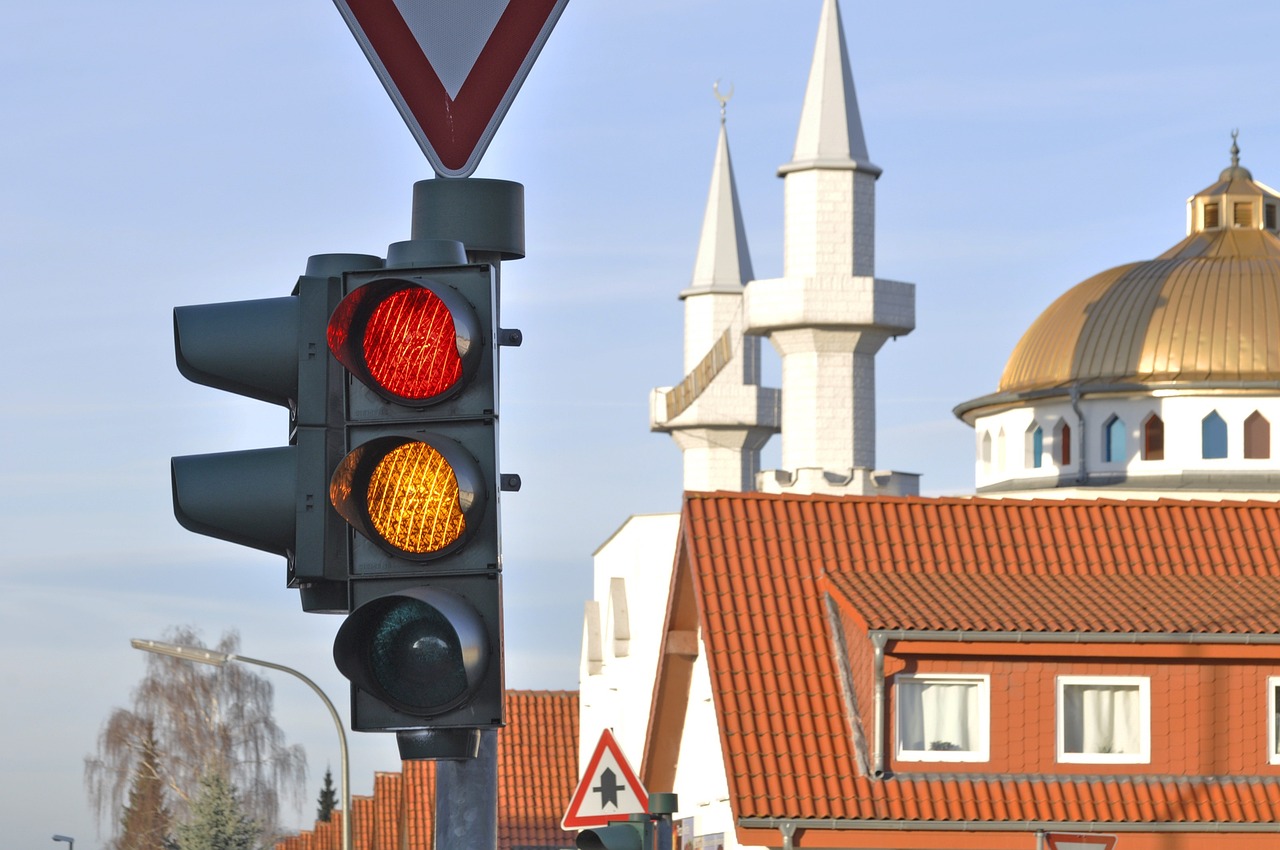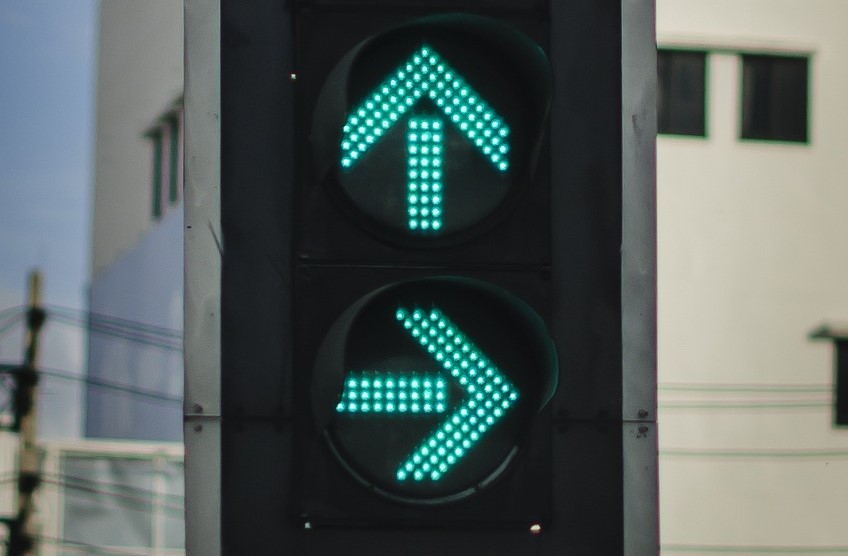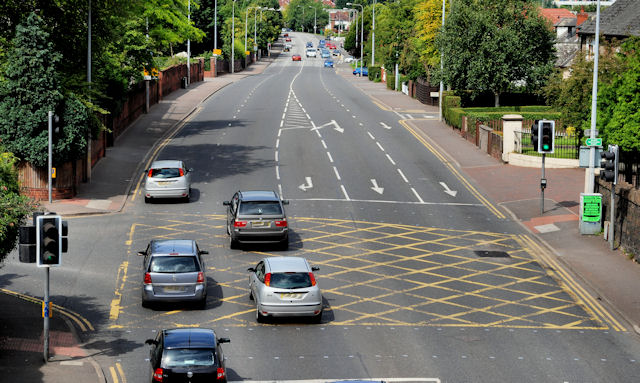Navigating the UK traffic light system can be daunting at first for learners, but studying the traffic light sequence and the protocols for each colour and combination of lights before getting onto the road can help with nerves and confidence.
We have put together a comprehensive rundown of the UK traffic light system so that you are equipped with the knowledge needed to drive safely using the lights.
The traffic light sequence

In the UK, there is a specific traffic light sequence that all drivers must understand to drive on the road safely. These are designed to provide drivers with clear signals that allow them to navigate tricky intersections and busy roads simply. Here is the traffic light sequence and the protocol for each signal within the UK traffic light system.
Red traffic light
– A red light signals to stop.
– If you are approaching a red light you must stop before the marked line.
– While waiting at a red light, you need to continue staying alert (e.g. no mobile phones or other distractions).
Red + Amber traffic light
– When both the red and amber traffic light signals are illuminated, this means ‘remain stopped, but prepare to go’.
– This signal lights up when the lights are about to change to green.
– You absolutely must stay behind the line until the light turns green.
Green traffic light
– The green light means GO.
– You may take off and move through the traffic lights when they signal green.
– It is important to still exercise judgement and caution – don’t solely rely on the lights, you must still look left and right for hazards before moving through.
– When approaching a green light, always anticipate a change to amber so that you are prepared to stop if necessary.
Amber traffic light
– An amber light also means STOP.
– You must always stop for amber traffic lights unless you are already over the line or so close that it is unsafe to stop before the line.
– Never take an amber light as a sign to start speeding up to get through – this is a very dangerous mindset that leads to accidents and red light runs.
Filter traffic lights

Filter traffic lights refer to the arrows you see on the light which may point right, left or straight ahead. These help drivers understand who has priority at junctures, allowing some cars to go but others to remain stopped. These filter lights are seen in two different ways:
– From red to green filter arrow: When a filter arrow simply turns from red to green, it means that traffic intending to go in the direction of the arrow is free to move through the lights in that direction. Note that you will still need to give way to any pedestrians crossing.
– Green arrow comes on while red traffic light remains on: This signals to drivers that they may proceed but only if the road is clear and it is safe to do so.
Turning right at traffic lights
Turning right at traffic lights inspired fear in learner drivers perhaps like no other traffic light manoeuvre they have to learn. Here is a step-by-step guide on how you can successfully tackle a right turn at traffic lights:
– Get into the right lane and indicate right.
– Move up into the junction, going as close to the middle as you safely can.
– Wait for a safe gap in the oncoming traffic, or for it to completely clear.
– Then turn right.
Some important notes about turning right at traffic lights:
– If the light turns to amber or red before you turn, make sure to safely turn as soon as possible – you will get a chance when the oncoming traffic stops for these lights.
– Never reverse back once you have entered the intersection.
Where to stop

Every traffic signal is equipped with a designated stop line for drivers. Occasionally, an additional area, distinguished by a different colour, is designated specifically for cyclists ahead of this stop line.
It’s crucial to adhere to these markings by stopping behind the line meant for motorists and refraining from encroaching into the space reserved for cyclists. This ensures safety and proper traffic flow for both drivers and cyclists at intersections.
Traffic light malfunctions
Under the rare circumstances in which a traffic light stops working – don’t panic, treat the junction as you would any similar unmarked intersection on the road. Proceed with extreme caution – there are no priority regulations here so you must remain alert in these situations and read the movements of other vehicles carefully.
Where possible, signal to other drivers when letting them through with a wave, and seek as much confirmation as possible that it is safe for you to pass through before you make the manoeuvre past the malfunctioning lights.
Yellow Box Junctions

Photo © Albert Bridge (cc-by-sa/2.0)
Yellow hatched box junctions are road markings designed to keep traffic clear and prevent gridlocks. These are often used in busy intersections where traffic build-up is common.
The rule of a box junction is that you must never enter the yellow box unless you are waiting to turn right. This means that you must not move into it until you can see that there is enough space beyond the box in your lane to drive forward.
Temporary traffic lights
Temporary lights are most often used for road works or other temporary obstructions that require the traffic to be controlled. As you approach a temporary traffic light, there will be a sign that says ‘Wait here until the light turns green’, acting as the stopping line that you must wait behind until the green signal.
Sometimes these lights control traffic going in 2 directions letting them through one at a time, meaning that the red light can stay on for what might seem like a long time. Never assume the light is faulty in this circumstance – ignoring the signal and driving ahead might put you face-to-face with oncoming traffic in a space that is only one car wide.
